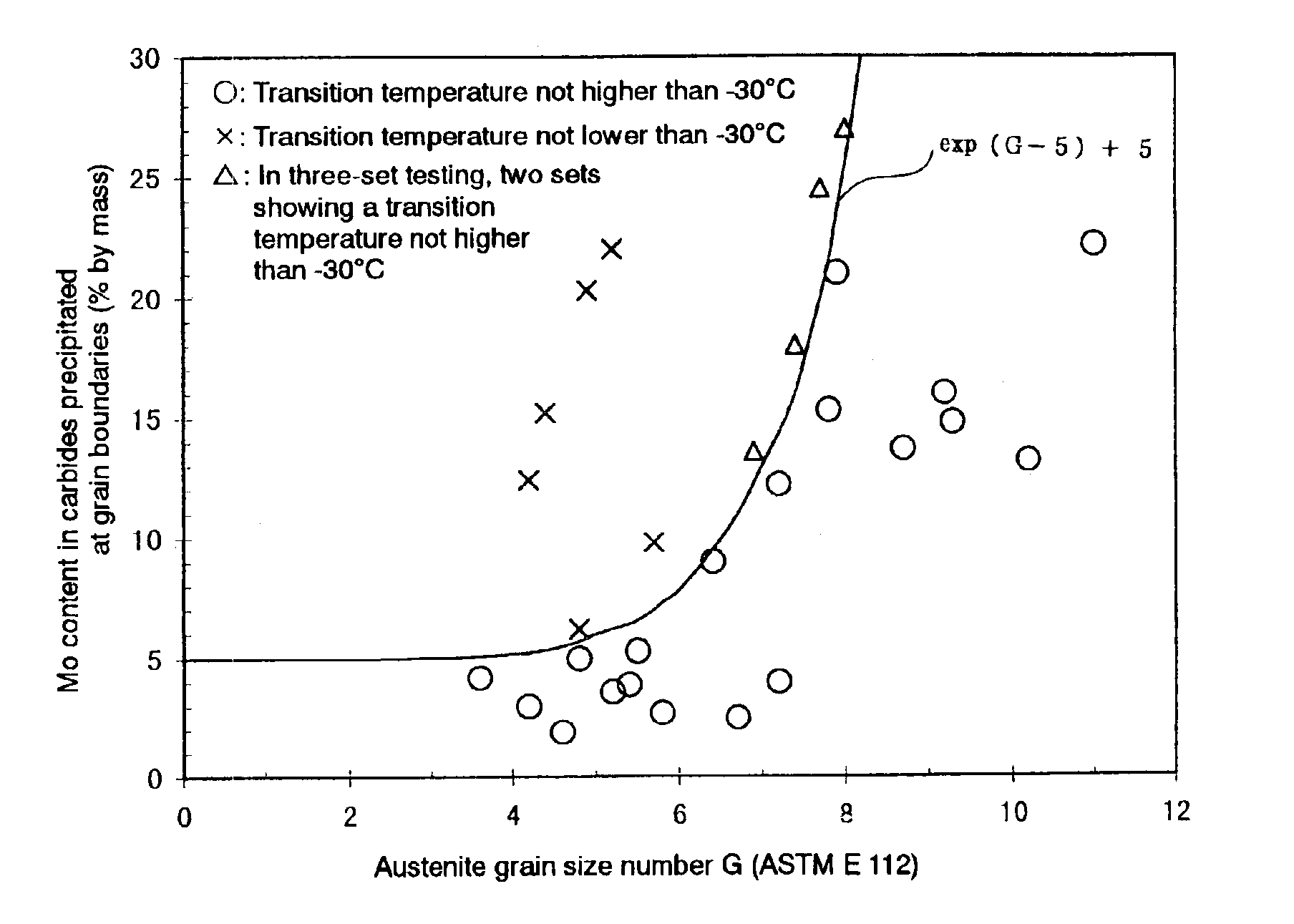High toughness steel material and method of producing steel pipes using same
a steel material and high toughness technology, applied in the direction of manufacturing tools, heat treatment equipment, furnaces, etc., can solve the problems of increasing the content of expensive elements, increasing the production cost of steel materials, and difficulty in achieving the required toughness level, so as to improve the hardenability of steel materials and improve the toughness. , the effect of improving the toughness
- Summary
- Abstract
- Description
- Claims
- Application Information
AI Technical Summary
Benefits of technology
Problems solved by technology
Method used
Image
Examples
examples
[0078]For confirming the effects of the steel materials according to the present invention, 13 steel species specified below in Table 1 were prepared. All the steel species satisfied the chemical composition ranges specified hereinabove.
[0079]Billets with an outside diameter of 225 mm were produced from each of the above steel species, heated to 1,250° C. and made into seamless steel pipes with an outside diameter of 244.5 mm and a wall thickness of 13.8 mm by the Mannesmann mandrel method. Each steel pipe manufactured was then subjected to an in-line or off-line heat treatment process.
[0080]In the in-line heat treatment process, for maintaining the austenitic state, each piper after rolling for pipe manufacture was subjected to soaking under various temperature conditions and to water quenching and then to 30 minutes of soaking, for tempering treatment, at a temperature such that the steel pipe might acquire a yield strength of about 758 MPa. Prior to quenching, the temperature for...
PUM
| Property | Measurement | Unit |
|---|---|---|
| transition temperature | aaaaa | aaaaa |
| yield strength | aaaaa | aaaaa |
| temperature | aaaaa | aaaaa |
Abstract
Description
Claims
Application Information
 Login to View More
Login to View More - R&D
- Intellectual Property
- Life Sciences
- Materials
- Tech Scout
- Unparalleled Data Quality
- Higher Quality Content
- 60% Fewer Hallucinations
Browse by: Latest US Patents, China's latest patents, Technical Efficacy Thesaurus, Application Domain, Technology Topic, Popular Technical Reports.
© 2025 PatSnap. All rights reserved.Legal|Privacy policy|Modern Slavery Act Transparency Statement|Sitemap|About US| Contact US: help@patsnap.com


